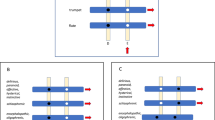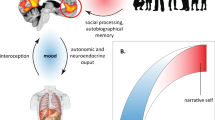Abstract
The development of the modern concept of mania is explored by a review and analysis of 28 psychiatric texts in English, French, and German published in Western Europe and North America from 1780 to 1900. From 1780 until the 1820s, mania was consistently viewed as a disorder of reasoning/judgment manifest by total insanity and/or the state of undifferentiated fury. For the next 30 years, the consensus shifted, and mania was understood to be largely a disorder of elevated mood. This concurrence of opinion broke down around 1860. For the remaining years of the 19th century, the mood-based model of mania competed for dominance with the view that mania arose primarily from accelerated mental processes and to a lesser degree that mania resulted from psychomotor excitation. While most authors advocated for one of these three positions, a number suggested that two or all three of these processes were central to the etiology of mania. Faculty psychology played an important role in these discussions, providing a framework within which to place the mental disturbance considered foundational to the manic syndrome. When the viewpoints shifted away from mania as a primary disorder of judgment, new approaches were needed to understand the emergence of grandiose delusions. Utilizing the concept of understandability, a number of authors suggested that manic delusions could arise directly from a euphoric mood. The history of mania shares some important similarities and differences with the history of melancholia during this same period. Both histories suggest that our major psychiatric categories evolved through a complex process involving both observations of symptoms, signs and course, and conceptual developments and a priori theories.
This is a preview of subscription content, access via your institution
Access options
Subscribe to this journal
Receive 12 print issues and online access
$259.00 per year
only $21.58 per issue
Buy this article
- Purchase on Springer Link
- Instant access to full article PDF
Prices may be subject to local taxes which are calculated during checkout
Similar content being viewed by others
References
Berrios GE. Depressive and manic states during the nineteenth century. In: Georgotas A, Cancro R, editors. Depression and mania. New York, NY: Elsevier; 1988. p. 13–25.
Berrios GE. History of the affective disorders. In: Paykel ES, editor. Handbook of affective disorders. London, UK: Churchill Livingstone; 1982. p. 43–56.
Berrios GE. Of Mania: introduction (Classic text no. 57). Hist Psychiatry. 2004;15:105–24.
Healy D. Mania: a short history of bipolar disorder. Baltimore: Johns Hopkins University Press; 2008.
Kendler KS. The clinical features of mania and their representation in modern diagnostic criteria. Psychol Med. 2017;47:1013–29.
American Psychiatric Association. Diagnostic and statistical manual of mental disorders. 4th ed. Washington, DC: American Psychiatric Association; 1994.
American Psychiatric Association. Diagnostic and statistical manual of mental disorders. 5th ed. DSM-5. Washington, DC: American Psychiatric Association; 2013.
Nemeroff CB, Weinberger D, Rutter M, MacMillan HL, Bryant RA, Wessely S, et al. DSM-5: a collection of psychiatrist views on the changes, controversies, and future directions. BMC Med. 2013;11:202.
Albrecht FM. A reappraisal of faculty psychology. J Hist Behav Sci. 1970;6:36–40.
Brooks GP. The faculty psychology of Thomas Reid. J Hist Behav Sci. 1976;12:65–77.
Radden J. Lumps and bumps: kantian faculty psychology, phrenology, and twentieth-century psychiatric classification. PPP. 1996;3:1–14.
Kendler KS. The impact of faculty psychology and theories of psychological causation on the origins of modern psychiatric nosology. In: Kendler KS, Parnas J, Zachar P, editors. Levels of analysis in psychopathology: cross-disciplinary perspectives. 1st ed. Cambridge, UK: Cambridge University Press; 2020.
Kendler KS, Campbell J. Expanding the domain of the understandable in psychiatric illness: an updating of the Jaspersian framework of explanation and understanding. Psychol Med. 2014;44:1–7.
Jaspers K. Allgemeine psychopathologie. 2nd ed. Berlin, Germany: Springer; 1920.
Jaspers K. General psychopathology; Translation by Hoenig J, Hamilton MW. English ed. Manchester, UK: Manchester University Press; 1963.
Cullen G. Synopsis nosologiae methodicae. 3rd ed. London: Edinburg Press; 1780.
Cullen W. A methodical system of nosology: translated from Latin by Dr. Eldad Lewis. Cornelius Sturtevant: Stockbridge; 1807.
Rowley W. A treatise on madness and suicide, with the modes of determining with precision, mental affections, in a legal point of view; and containing objections to vomiting, opium, and other mal-practices, etc. London: J. Barfield; 1804.
Scull A, MacKensie C, Hervey N. Masters of Bedlam. 1st ed. Princeton: Princeton University Press; 1996.
Morison A. Outlines of mental diseases, with seventeen illustrative engravings for the use of students. 3rd ed. Edinburgh: Maclachlan & Stewart; 1826.
Norman C. Mania. In: Tuke DH, editor. A dictionary of psychological medicine: giving the definition, etymology and synonyms of the terms used in medical psychology. Philadelphia: P. Blakiston, Son & Company; 1892. p. 761–7.
Pinel PH. Traité Médico-Philosophique sur L’Aliénation Mentale, ou La Manie. Paris: Chez Richard, Caille et Ravier; 1801.
Pinel PH. A treatise on insanity, in which are contained the principles of a new and more practical nosology of maniacal disorders. Sheffield: W. Todd for Messrs. Cadell and Davies; 1806.
Berrios GE. The history of mental symptoms: descriptive psychopathology since the nineteenth century. New York, NY: Cambridge University Press; 1996.
Pinel P. Traité Médico-Philosophique sur L’Aliénation Mentale. 2nd ed. Paris: Jean-Antoine Brosson; 1809.
Bucknill JC, Tuke DH. A manual of psychological medicine: the history, nosology, description, statistics, diagnosis, pathology, and treatment of insanity. Philadelphia: Blanchard and Lea; 1858.
Maudsley H. The physiology and pathology of the mind. New York: D. Appleton and Company; 1867.
Emminghaus H. Allgemeine psychopathologie Zur Einführung In Das Studium Der Geistesstörungen. Leipzig: Verlag Von F.C.W. Vogel; 1878.
Griesinger W. Die pathologie und therapie der psychischen Krankheiten: für Aerzte und Studirende. Stutrttgart, Germany: Verlag von Adolph Krabbe; 1861.
Griesinger W. Mental pathology and therapeutics. London: The New Sydenham Society; 1867.
Dickson JT. The science and practice of medicine in relation to mind: the pathology of nerve centres and the jurisprudence of insanity being a course of lectures delivered in guy’s hospital. New York: D. Appleton and Company; 1874.
Mendel E. Die Manie. Eine Monographie. Leipzig: Urban & Schwarzenberg; 1881.
Kendler KS. David Skae and his nineteenth century etiologic psychiatric diagnostic system: looking forward by looking back. Mol Psychiatry. 2017.
Wernicke C. An outline of psychiatry in clinical lectures: the lectures of Carl Wernicke (translated by Robert Miller and John Dennison). 1st ed. New York: Springer; 2015.
Krafft-Ebing Rv. Lehrbuch der Psychiatrie auf klinischer Grundlange für practische Ärzte und Studirende. Band II. Die specielle Pathologie und Therapie des Irreseins. Stuttgart: Verlag von Ferdinand Enke; 1879.
Jackson SW. Melancholia and depression: from Hippocratic times to modern times. New Haven: Yale University Press; 1986.
Dr Snell. Verhandlungen Psychiatrischer Vereine. 6. Versammlung der Mitglieder des Vereins der Irrenärzte Niedersachsens und Westphalens in Hannover am 1. Mai 1872. Z fur Psychiatr. 1873;29:441–9.
Spitzer RL, Endicott J, Robins E. Research diagnostic criteria for a selected group of functional disorders. 2nd ed. New York: New York Psychiatric Institute; 1975.
American Psychiatric Association. Diagnostic and statistical manual of mental disorders. 3rd ed. Washington, DC: American Psychiatric Association; 1980.
Kendler KS. The origin of our modern concept of depression: the history of melancholia from 1780–1880. JAMA Psychiatry. 2020. https://doi.org/10.1001/jamapsychiatry.2019.4709.
Bogen J. Theory and observation in science. Zalta EN, Nodelman U, Allen C, Anderson RL, editors. Stanford encyclopedia of philosophy, 1–19. 2017. Stanford, CA, The Metaphysics Research Lab: Center for the Study of Language and Information: Stanford University.
Hammond WA. A treatise on insanity in its medical relations. New York: D. Appleton and Company; 1883.
Pargeter W. Observations on maniacal disorders. London: J. Murray & J. Fletcher, Oxford; 1792.
Chiarugi V. On insanity and its classification: translation of: Della pazzia in genere (1793). U.S.A.: Science History Publications: Watson Publishing International; 1987.
Burrows GM. Commentaries on the causes, forms, symptoms, and treatment, moral and medical, of insanity. London: Thomas and George Underwood; 1828.
Esquirol JED. Mental maladies. A treatise on insanity. Translated from the French, with additions, by E. K. Hunt, M.D. Philadelphia, PA: Lea and Blanchard; 1845.
Guislain J. Leçons Orales sur Les Phrénopathies, ou Traitê Thêorique Et Pratique Des Maladies Mentales: Cours Donné A La Clinique Des Êtablissements D’Aliénés A Gand. Paris, & Bonn, Gand, L. Hebbelynck, Êditeur; 1852.
Flemming CF. Pathologie Und Therapie Der Psychosen. Berlin: Verlag von August Hirschwald; 1859.
Wachsmuth A. Allgemeine Pathologie Der Seele. Frankfurt: Verlag Von Meidinger Sohn & Company; 1859.
Tigges Dr. Vergleichende Statistik über die Formen der Geisteskrankheiten. In: Leidesdorf M, Meynert T, editors. Vierteljahrsschrift für Psychiatrie (Psychiatric Quarterly). Druck und verlag der J. H. Heuser’schen Buchhandlung; 1868;198–213.
Dagonet H. Nouveau Traité Élémentaire et Pratique Des Maladies Mentales. Paris: Librairie J.B. Baillière Et Fils; 1876.
Ball B. Leçons Sur Les Maladies Mentales. Paris: Asselin Et Cª, Libraires De La Faculté De Médecine; 1880.
Spitzka EC. Insanity: its classification, diagnosis and treatment, a manual for students and practitioners of medicine. 1st ed. New York, NY: Bermingham & Company; 1883.
Clouston TS. Clinical lectures on mental diseases. 1st ed. Philadelphia, PA: Henry C. Lea’s Son & CO.(Dornan); 1884.
Kirchhoff T. Handbook of insanity for practitioners and students. New York: William Wood & Company; 1893.
Acknowledgements
Translations from the French were done by KSK. German texts were translated by Astrid Klee MA in collaboration with KSK.
Author information
Authors and Affiliations
Corresponding author
Ethics declarations
Conflict of interest
The author declares no conflict of interest.
Additional information
Publisher’s note Springer Nature remains neutral with regard to jurisdictional claims in published maps and institutional affiliations.
Rights and permissions
About this article
Cite this article
Kendler, K.S. The origin of our modern concept of mania in texts from 1780 to 1900. Mol Psychiatry 25, 1975–1985 (2020). https://doi.org/10.1038/s41380-020-0657-0
Received:
Revised:
Accepted:
Published:
Issue Date:
DOI: https://doi.org/10.1038/s41380-020-0657-0



